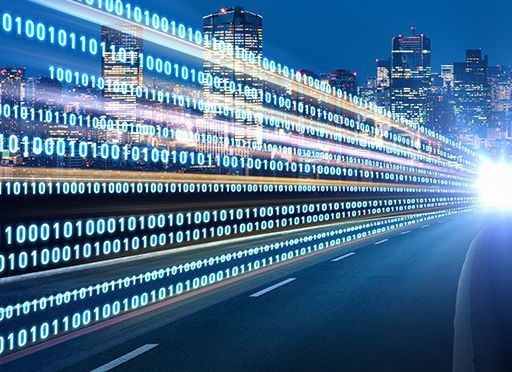The Great Reset and the Future of Downtown
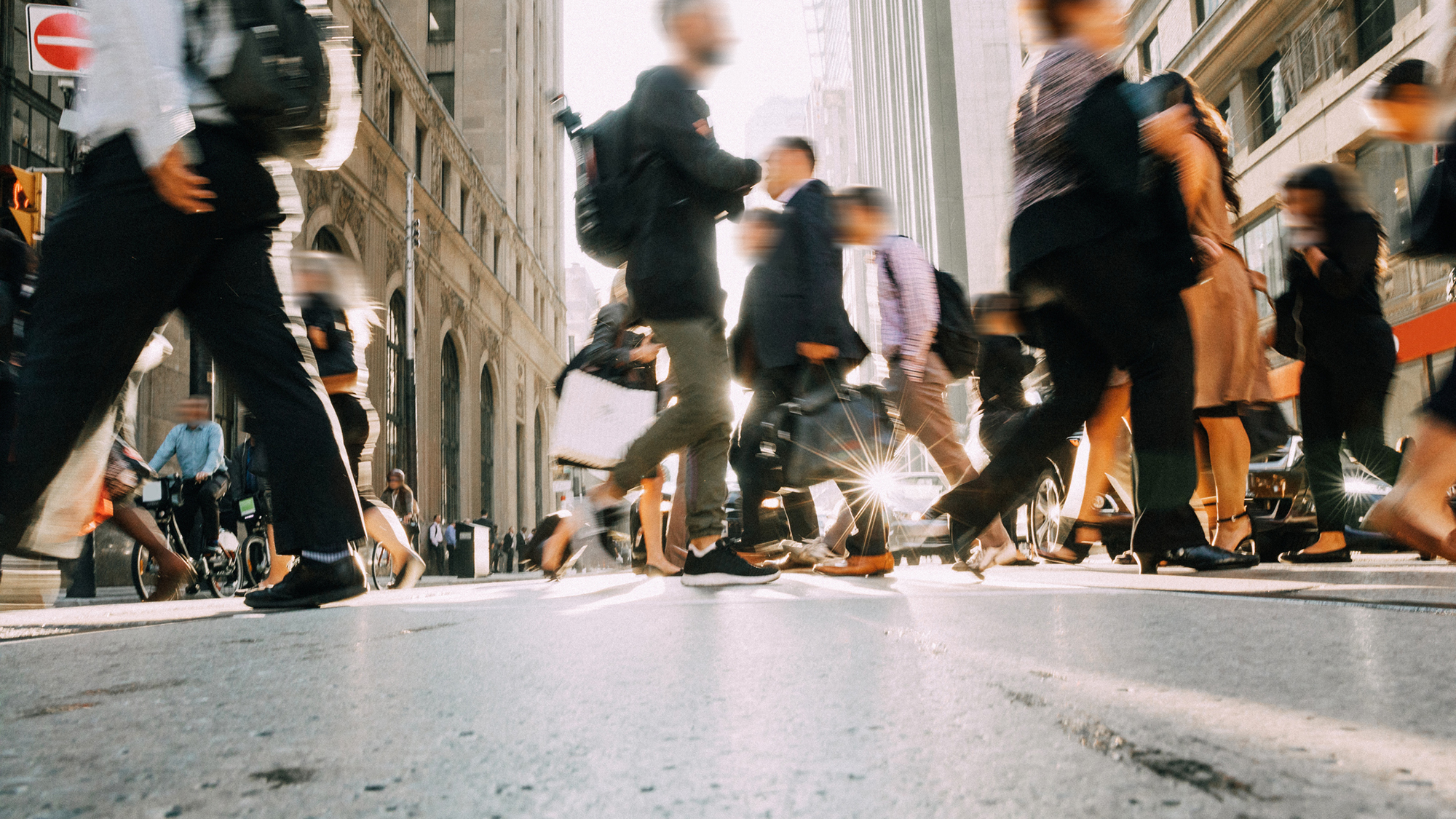
In The Great Reset, urbanist Richard Florida opines on the future of cities and the nature of work after the Great Recession in 2008. He compares the recovery from that crash to previous market crashes, including the Great Depression of the 1930s. He predicted that, as in those earlier crashes, the 2008 recession would “reset” 21st-century society according to a familiar pattern: when the economy stalls, innovations are explored. Then successful innovations become the scaffolding for a new economic order inviting private and public investments to build on that promise, and developing a new “spatial fix” for where and how people live and work. As he said, “Times of crisis reveal what is and isn’t working.”
The Lifecycle of Cities
After World War II, cities stagnated and declined as families moved to the suburbs. Businesses followed their customers. Planners designed both suburbs and cities around the car, governments invested in highways and commuting became the new paradigm, connecting home and work lives. As corporate headquarters relocated to the suburbs, cities cut back social safety net funding and community amenities.
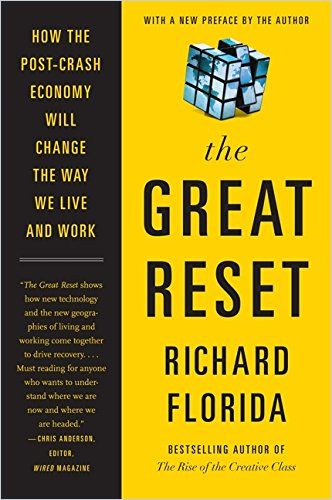
In the 1980s, then-president Ronald Reagan cut funding to urban areas by 70%. The effects were devastating. New York took on short-term debt, bringing it to the brink of bankruptcy. Similarly, Detroit’s auto companies located plants in the city’s suburbs. Their predominantly white workers followed. Those suburbs grew prosperous while downtown Detroit emptied out and eventually filed for bankruptcy in 2013. This exodus plus a disproportionately small representation in Congress fueled a strong anti-urban bias and further disinvestment. Without a tax base and a plan for growth, cities languished until a new urbanist revival fueled by a “creative class” at the vanguard of the knowledge economy started remaking once great cities. This is the “reset” the country experienced, transitioning from an industrial to a knowledge economy in 2008.
Housing was an unsustainable engine of economic growth. Too many cities simply lacked the underlying economic base and productivity to support high housing prices.
Richard Florida
By attracting labor to one area, providing the diversity that leads to innovation and making public investments in education that businesses can leverage, cities remain primary drivers of the global economy. However, they harbor widening and costly economic inequalities.
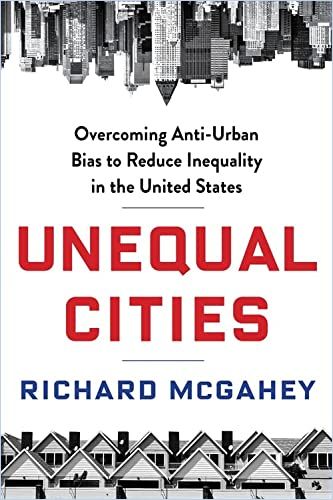
Author of Unequal Cities Richard McGahey illuminates the ways in which unaddressed and growing inequalities hamper the US economy while stifling innovation. One indicator of this economic gap has been the relentlessly rising cost of housing.
Covid-19 and Generative AI: The Other Resets
Looking forward to 2020, Florida predicted the increased growth of megacities and the transit systems to move workers to and from them. He did not predict the Covid-19 pandemic: nobody did. In 2020, when the pandemic hit, the world was in the midst of a digital transformation. The pandemic accelerated trends that were already happening, such as increased automation and a move to more online work and commerce. But other trends Florida did not foresee also call into question his conclusions about cities and especially their downtowns, which, since the Industrial Revolution, have been drivers of economic growth.
HR expert Josh Bersin focuses on another kind of “Big Reset,” one in remote and hybrid work arrangements. The pandemic accelerated work-from-home trends. Now, post-pandemic, work-from-home arrangements are catalyzing a change in the way employers and employees organize their work and home lives.
Even in the optimistic scenario that 90% of white-collar workers return to the office three days a week, that’s still a nearly 50% decline in commuting and office use.
Derek Thompson
Not everybody is happy about the “new normal.” “Winners and Losers in the Work From Home Revolution” journalist Derek Thompson found that profitable companies were happy to continue allowing employees to work from home post-pandemic, while less profitable companies wanted their workers to return to the office. Small businesses in downtown districts depend on foot traffic from commuters and Thompson predicted they would likely be losers as work-from-home expanded.
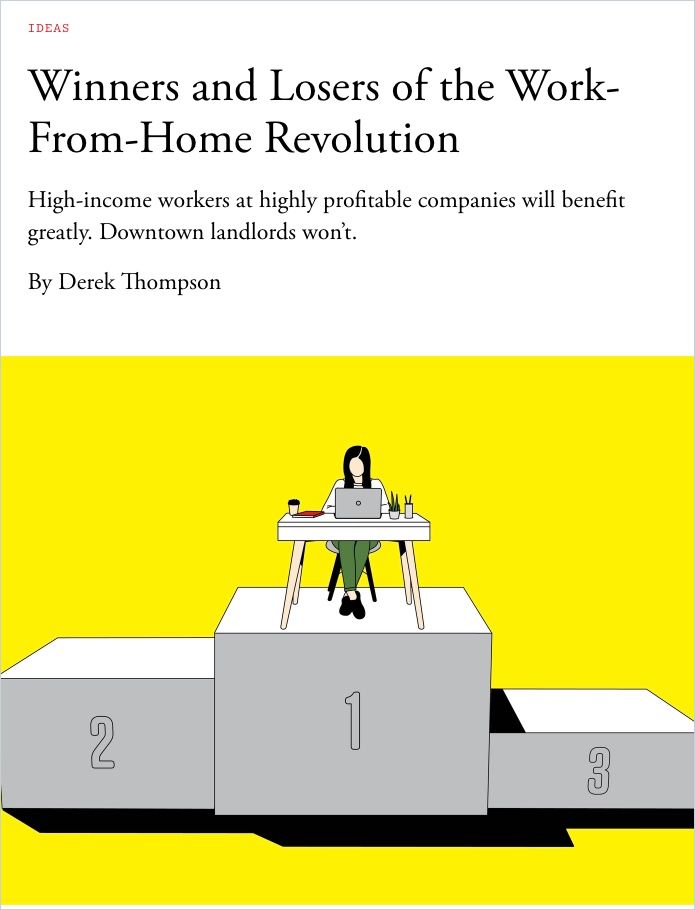
Post-pandemic, cities are not the creative hotspots Florida championed, but “dried-out urban husks” with blocks of shuttered shops and restaurants. Journalist Matt Haag wrote in “Remote Work is Here to Stay. Manhattan May Never Be the Same” that, post-pandemic, New York’s office space stood more than 16% empty. It’s still climbing as companies transition their workforces to more permanent work-from-home arrangements.
Haag noted in 2021 that large tech employers Apple and Facebook bucked the trend by leasing more space for their New York operations. However, due to worry and expectations about generative AI and the economic headwinds of rising inflation and interest rates, tech companies laid off more than 240,000 workers in 2023. Even to Meta, Facebook’s parent company, extra office space looks like a luxury they can’t afford; it’s planning to sublease the 19 floors of commercial space in downtown Austin it snapped up in 2022 that it suddenly doesn’t need. In addition to reduced downtown retail revenues, fewer commuters decrease revenues for transit systems, leading to hikes or reduced services.
The New Normal
Former commuters, now working remotely, spend their money closer to home, fueling a revival of smaller city centers and downtowns – something economist Matthew E. Kahn calls “Remotevilles.” Retail businesses will follow their customers to the suburbs, as will development money.
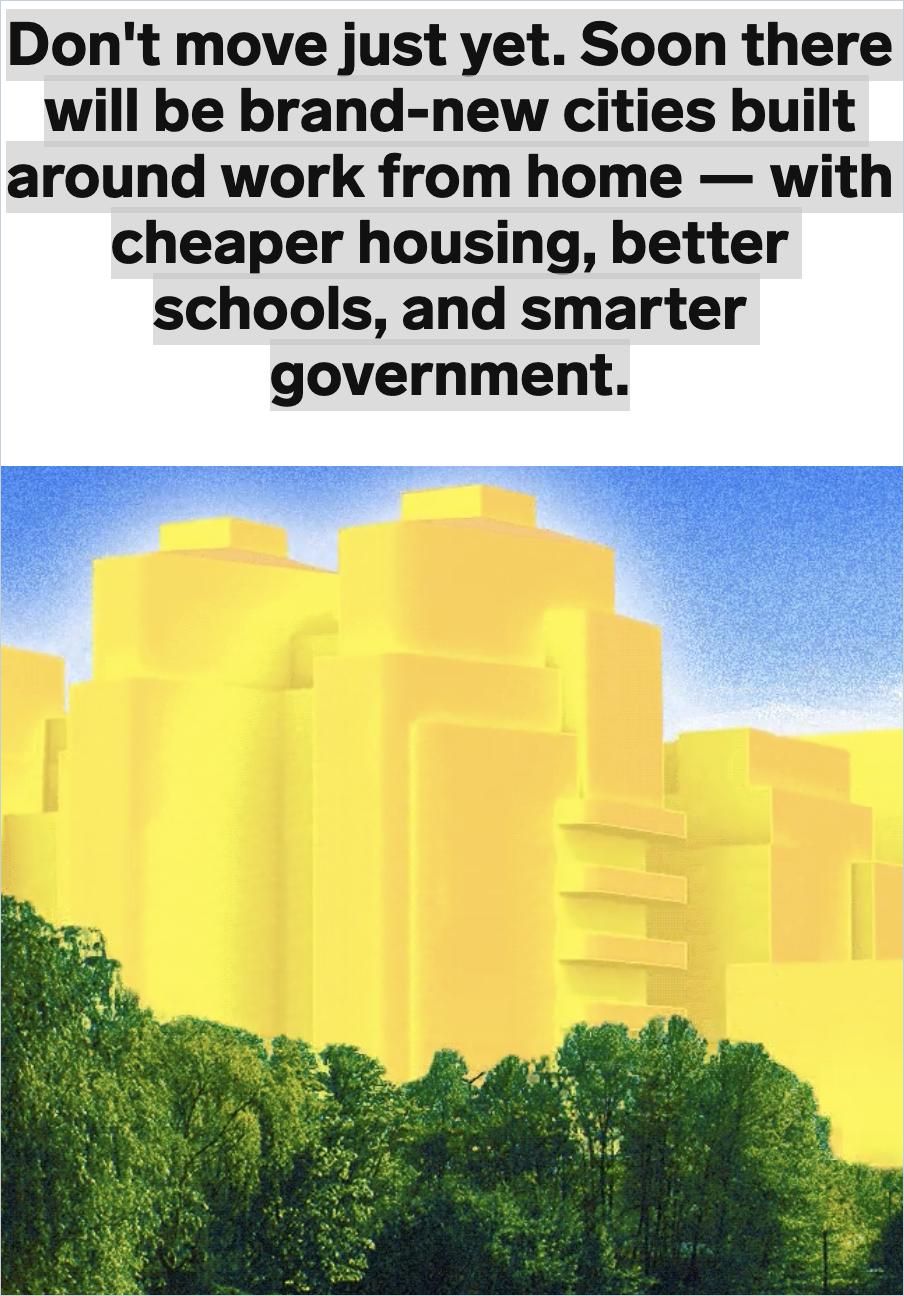
Kahn foresees smaller cities like Baltimore, Buffalo and Boise benefitting from the demands of work-from-home employees: new schools, more affordable housing and amenities, and more responsive local government with greater citizen engagement. These “remotevilles” would still be connected to larger metropolitan areas by transit but provide a greater quality of life for residents.
As the economy shifts more toward services and remote work, our new population centers will be more likely to arise in areas that feature great quality of life rather than pure commercial functionality.
Matthew E. Kahn
Authors Jeremy Myerson and Philip Ross note in Unworking that, post-pandemic, up to 50% of people who work from home would like to continue doing so, and that the majority of those remaining prefer a hybrid setup, with some days at home, some days in the office.
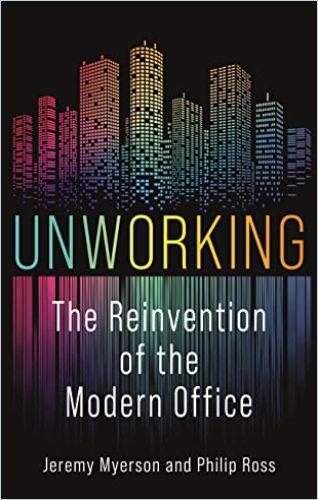
Whereas once companies tried to bring all the amenities of comfortable suburbia into their office campuses, now workers prefer their companies to be better integrated into their surrounding communities, with transit options, walkable spaces and access to retail.
Small But Mighty
In Saving Main Street, author Gary Rivlin credits small businesses run largely by new waves of immigrants for reviving main streets in countless rust belt cities starting in the 1990s, while big box stores mostly settled on their fringes. Yet when the pandemic hit, relief programs disproportionately helped the big chain stores while small and micro-businesses faced financial ruin.
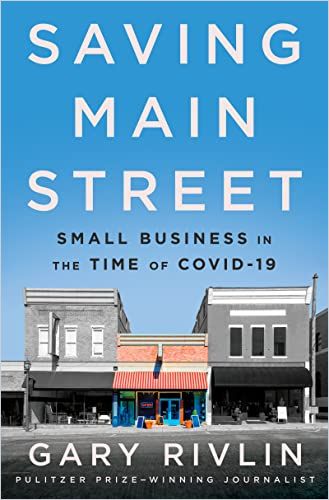
Despite the importance of small businesses to the overall economy, support is inconsistent. The Small Business Administration’s budget for a year equals what the Defense Department spends in a day.
Job growth in the United States is fueled almost entirely by small businesses and not larger ones, which as a group tend to shed as many jobs as they create.
Gary Rivlin
For companies rethinking their own priorities, better integration into local communities gives them greater access to local universities, entrepreneurs and startups. Journalist James Fallows emphasizes this in Our Towns, co-written with Deborah Fallows, and his article “When a Company Invests in an Underdog City.” By locating to an “underdog” city, Bitwise, a tech company, was able to be integral to Fresno, California’s revitalization. Now it seeks to replicate its success in other formerly agricultural or manufacturing hubs that global digital transformation left behind. They focus on Rust Belt downtowns with solid infrastructure, towns like Detroit.
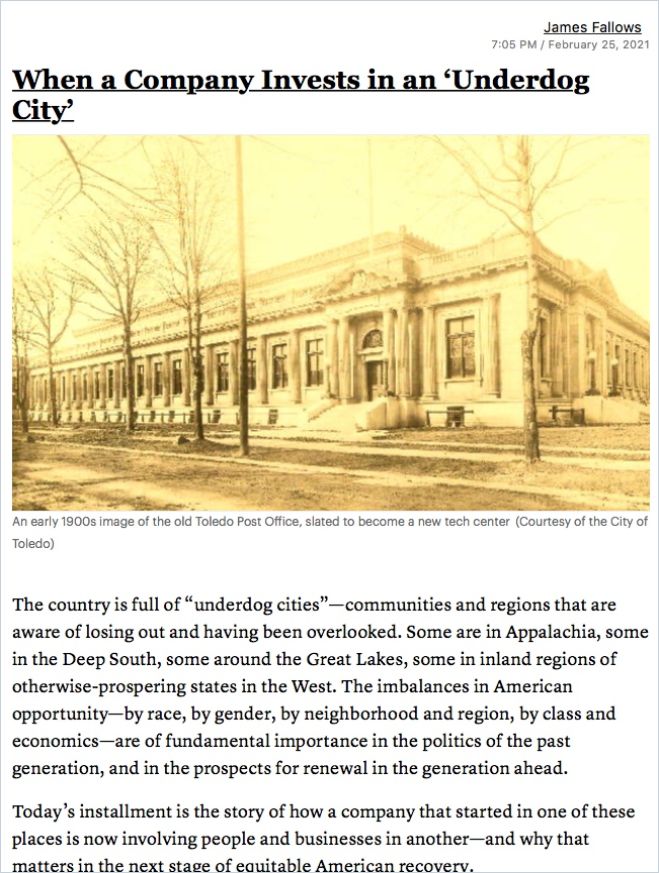
In the past, physical infrastructure has been an economic force multiplier. Now, digital infrastructure is. In “How ‘Work From Anywhere’ Can Build the City of the Future,” Amit Midha, writing for World Economic Forum, questions what, really, is “city life” anyway. Cities will have to provide more quality of life value to lure residents if people don’t have to live in them to work. Cities still provide the lion’s share of GDP in many countries and continue to grow: 68% of the world’s people are projected to live in cities by 2050. Robust technological infrastructure is mandatory to remain relevant in the modern world. Whether or not people will trust that technology depends on their trust in their government’s commitments to privacy and transparency.
The role of cities goes beyond economics. They bring people and companies together to learn from one another while sharing ideas.
Amit Midha
Inventing the Future of Downtown
Many companies realize their employees aren’t coming back to the office and are adjusting. While co-working famously didn’t pan out well for WeWork (or its investors), in a world with more gig workers and entrepreneurs, the idea is alive and thriving as an alternative for owners of those empty office buildings. New York mayor Eric Adams’ Adaptive Reuse Task Force proposed many ways to ease the process of turning empty office space into desperately needed housing in Manhattan. There are ample ideas for uses, from vertical farming to spas to university classrooms. A new “creative class” may once again be at the forefront for downtown’s next iteration.
In the past, cities attracted new development with tax incentives, designating “innovation districts” or “Business Improvement Areas” to lure new land uses and development within city limits. As big-box stores close locations, perhaps the smaller businesses they drove out of cities will return. New York City was on the brink of bankruptcy after much of its population moved to the suburbs post-WWII, but in the last few decades, it reinvented itself as an international banking and finance capital, attracting new and bigger businesses to locate there. Like people, brands and companies, cities must also go through processes of reinvention to stay relevant. Now, cities large and small are reinventing themselves and slowly establishing a “new normal.” Don’t count any of them out just yet.


